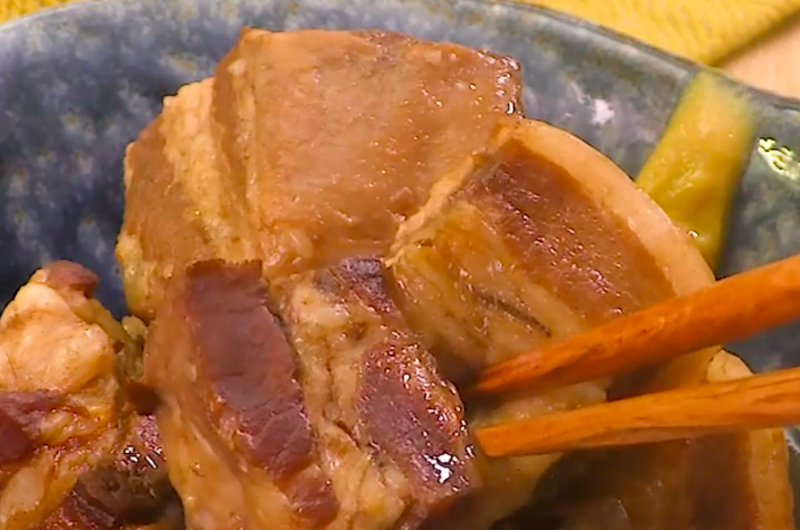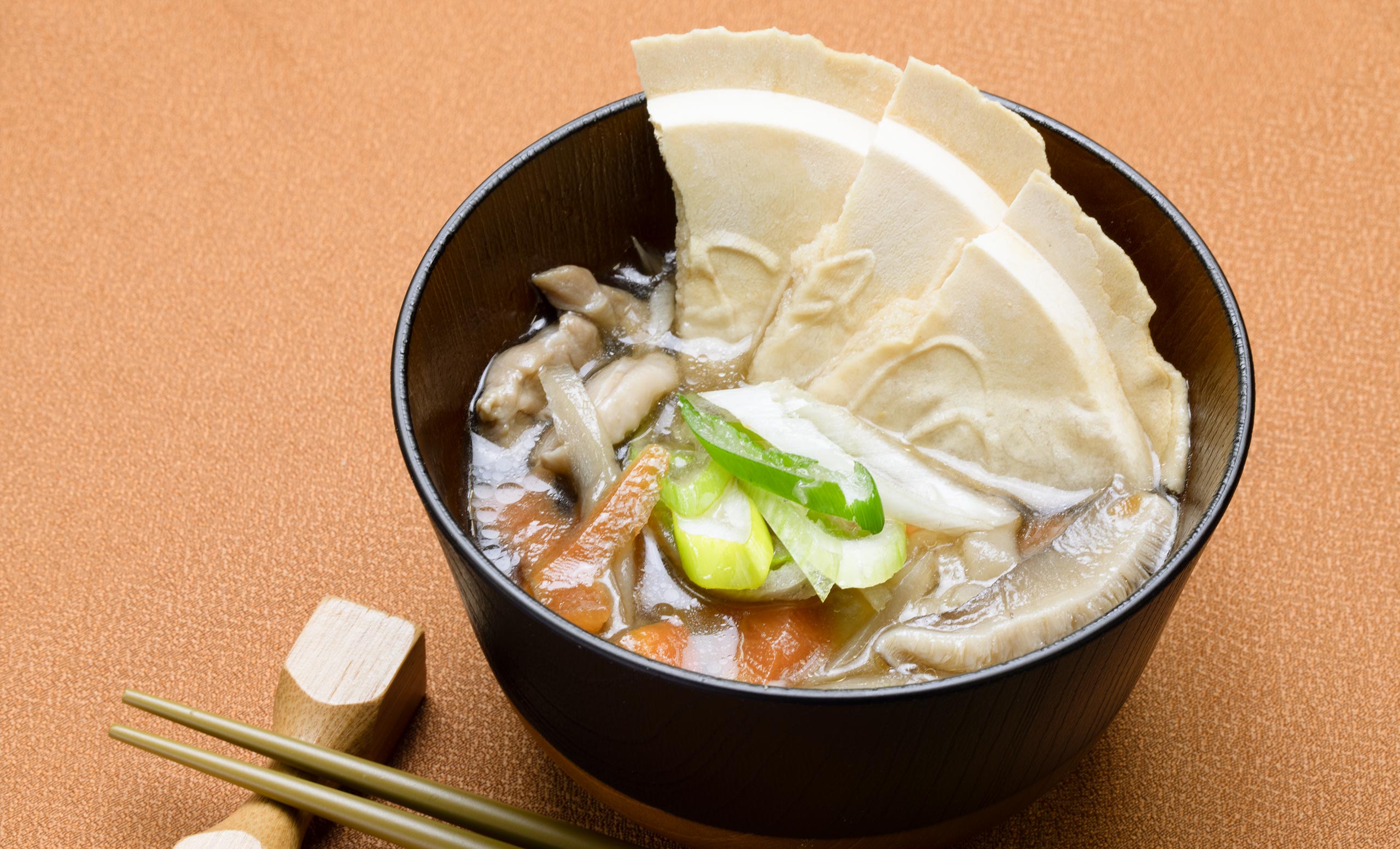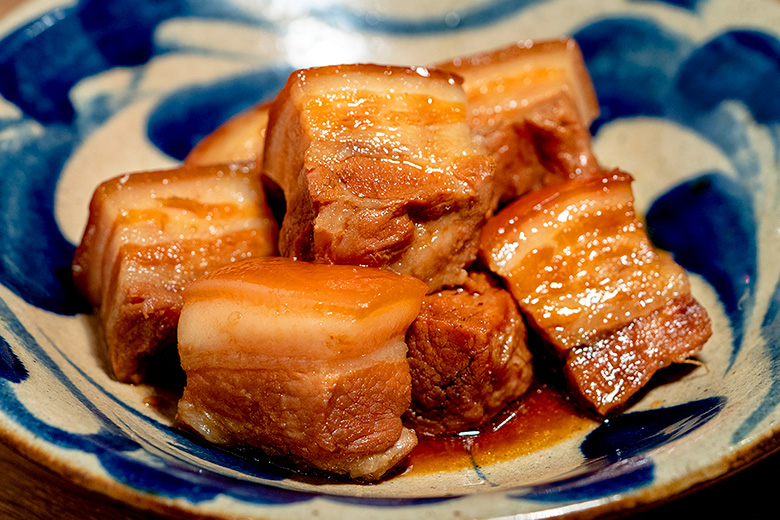
Rafute (ラフテー) is a traditional braised pork belly dish that is very popular in Okinawa Prefecture (Kyushu Region).
It is traditionally made by simmering the meat for long periods of time — sometimes for as long as one or two days! This results in a soft, mouth-watering, melt-in-your-mouth texture that always leaves you wanting more.
Rafute is sometimes eaten by itself (as a side dish), or used in other local dishes such as Okinawa Soba.
The word “rafute” (pronounced “rah-foo-teh“) is said to have been adapted from the Chinese word “luo huo tui” (羅火腿). Huo tui means “ham” in Chinese, but luo is generally someone’s surname, so it is unclear of the exact meaning. Perhaps the person that created the dish was named Luo? 🧐
Read on for more interesting info about rafute!
Ingredients
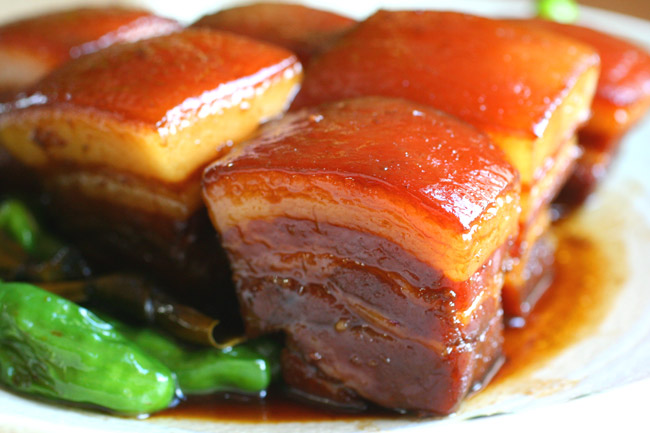
The main ingredients of rafute are:
- Pork
- Awamori
- Soy Sauce
The particular cut of pork used is “three-layered pork belly” — called sanmai-niku (三枚肉) in Japanese. The pork shows three distinct layers — lean meat, fat, and skin.
The skin is always left on the pork for Okinawan rafute. This is in contrast to another common Japanese stewed pork dish called “kakuni” (角煮), which removes the skin before cooking. In other parts of Japan, it is actually difficult to find skin-on pork belly.
The pork meat is simmered in awamori and bonito stock to create a light flavor. The flavor of awamori permeates the meat, giving it a unique aroma and deep taste. Other common seasoning ingredients used to stew rafute are brown sugar (also famous in Okinawa), and soy sauce.
Location / Where to Eat
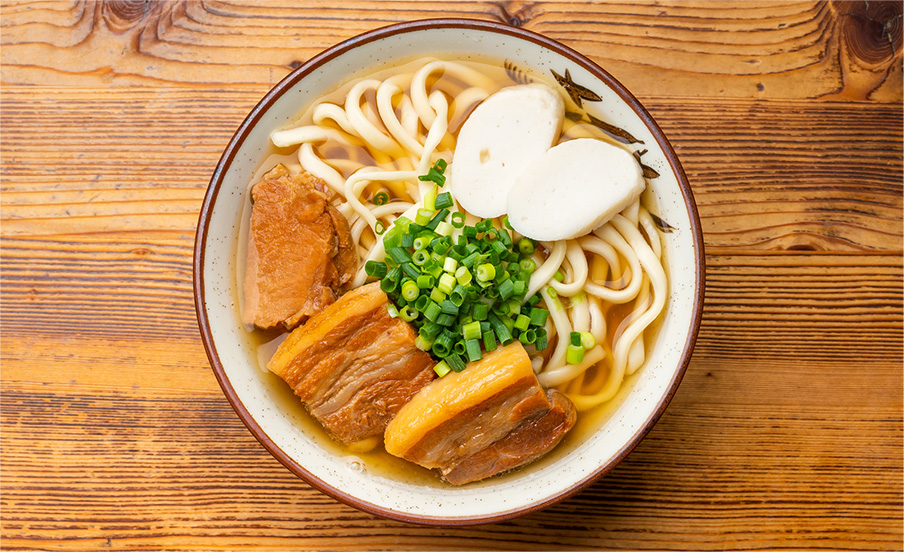
Rafute is eaten all throughout Okinawa. You can find it served at restaurants throughout the islands, and it is also frequenly cooked at home.
Many other popular dishes use rafute as an ingredient, most notably Okinawa soba.
If you are ever in Okinawa, make sure you try some authentic rafute!
History / Origin of Rafute
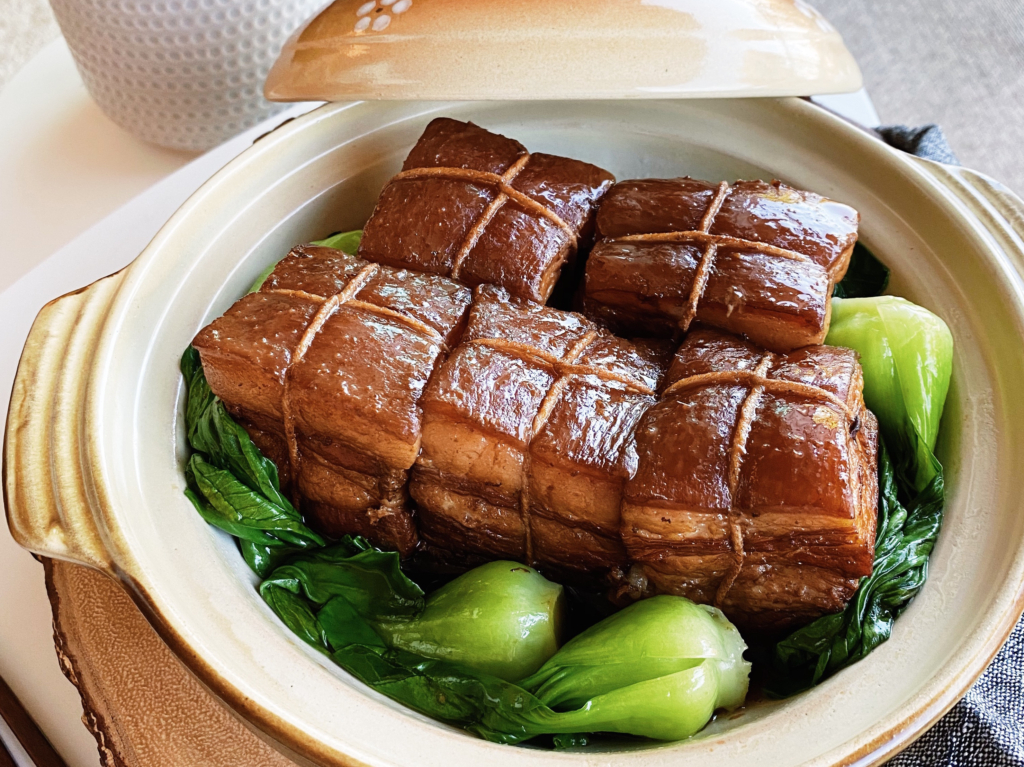
Rafute is thought to have originally been introduced from China during the Ryukyu Kingdom era (1429 to 1879).
The Chinese dish which rafute is based is called “dong po rou” (東坡肉), a popular type of Jiangsu cuisine. It was later adapted to use local Okinawan ingredients, and rafute was born!
Like many delicious foods, rafute was at first reserved only for royalty and the rich. It later became a very common dish that was cooked at home, and eventually spread to restaurants that specialize in Okinawan cuisine.
How to make Okinawa Rafute
Making rafute is not technically difficult. It does involve a lot of time though to stew the meat.
To make “authentic” Okinawan rafute, you will need to have “Awamori” (i.e. Okinawa distilled liquor). If not, you can also use regular cooking sake, though it won’t quite be the same. 😉
Below is a very simple step-by-step recipe to make rafute at home. Originally adapted from Delish Kitchen.
Simple Rafute Recipe (ラフテー)
Course: Main, SidesCuisine: Japanese, OkinawaDifficulty: Easy10
minutes2
hours469
kcal1
hour15
minutesEasy recipe to make Okinawa’s famous braised pork belly — “rafute” (ラフテー). Original recipe from Delish Kitchen.
Ingredients
Pork belly block meat … 400g
- Seasoning
Japanese-style granulated dashi … 1 teaspoon
Boiled soup (from cooking pork) … 400cc
Awamori (or sake) … 100cc
Brown sugar (or sugar) … 2 tablespoons
Ginger … 1 piece
Soy sauce … 3 tablespoons
Directions
- Place the pork in a pot, and add enough water to cover the pork. Bring to a boil over medium heat, then reduce the heat to low and boil for about an hour. Remove any scum/foam that appears when boiling the meat.
- Save about 400ml of the boiled broth/water to use later.
- Rinse the cooked pork with clean water and cut it into bite-sized pieces (3-4cm wide).
- Add all seasoning ingredients into a pot along with the pork pieces. Cover with otoshibuta (optional), and simmer over medium-low heat for about 45 minutes until tender.
- Enjoy!
Recipe Video
Notes
- An otoshibuta (i.e. Japanese drop lid) helps prevent ingredients from moving around, and helps with even distribution of flavor.
- Rafute is often paired with karashi (i.e. Japanese mustard) as a condiment.
Summary
Have you ever tried Okinawa rafute before? What did you think of it?
Leave your thoughts and comments below!
Subscribe for free today! Receive cool recipes, my latest Japanese knife picks and learn about Japanese culture. Delivered every other week to your inbox.
